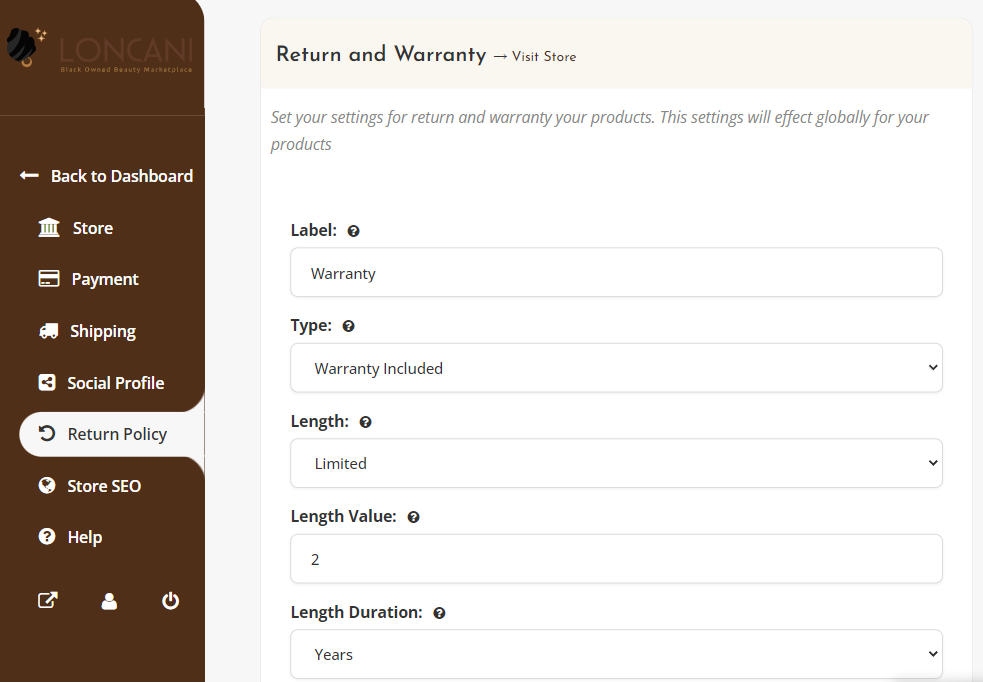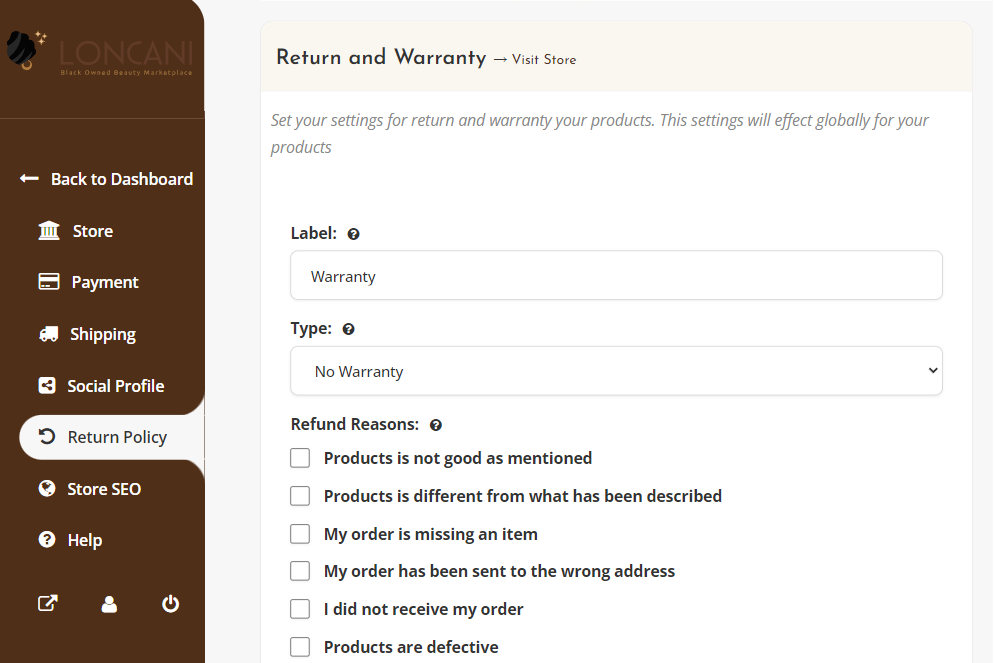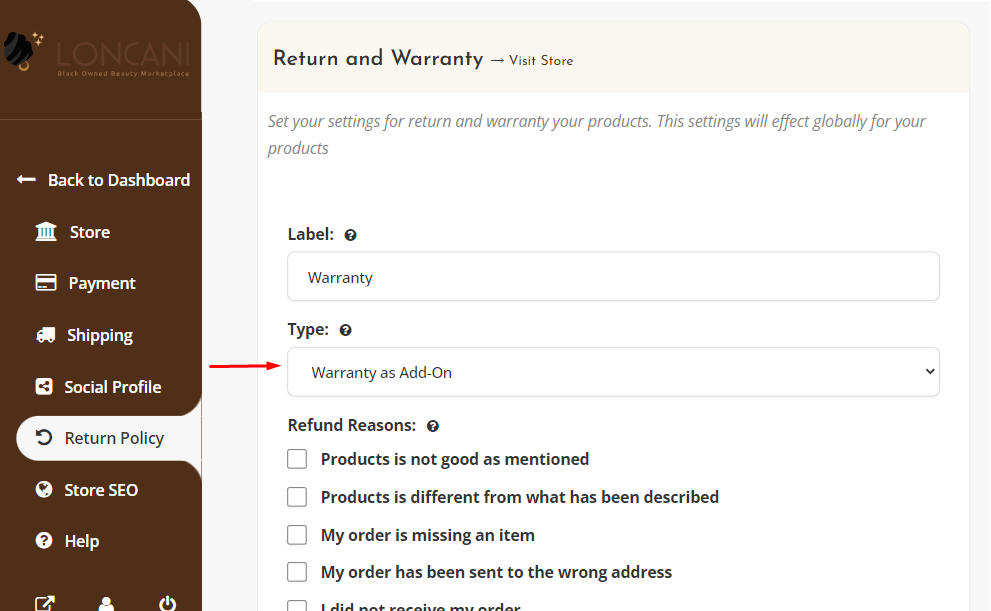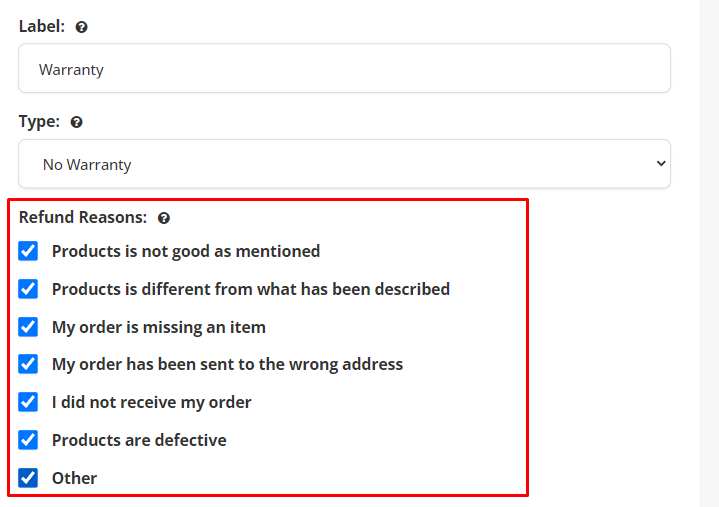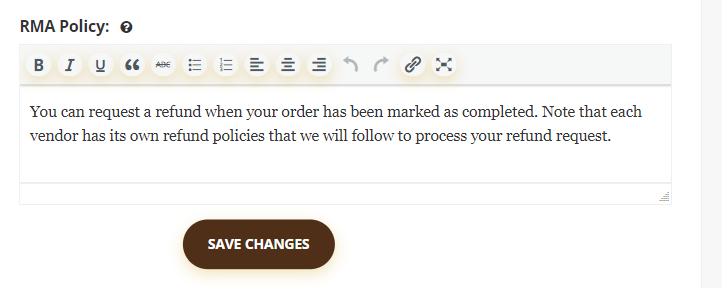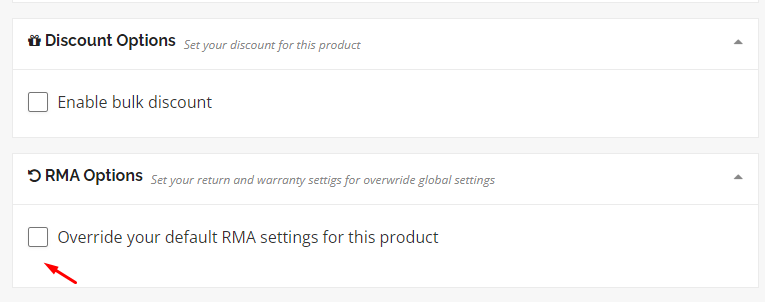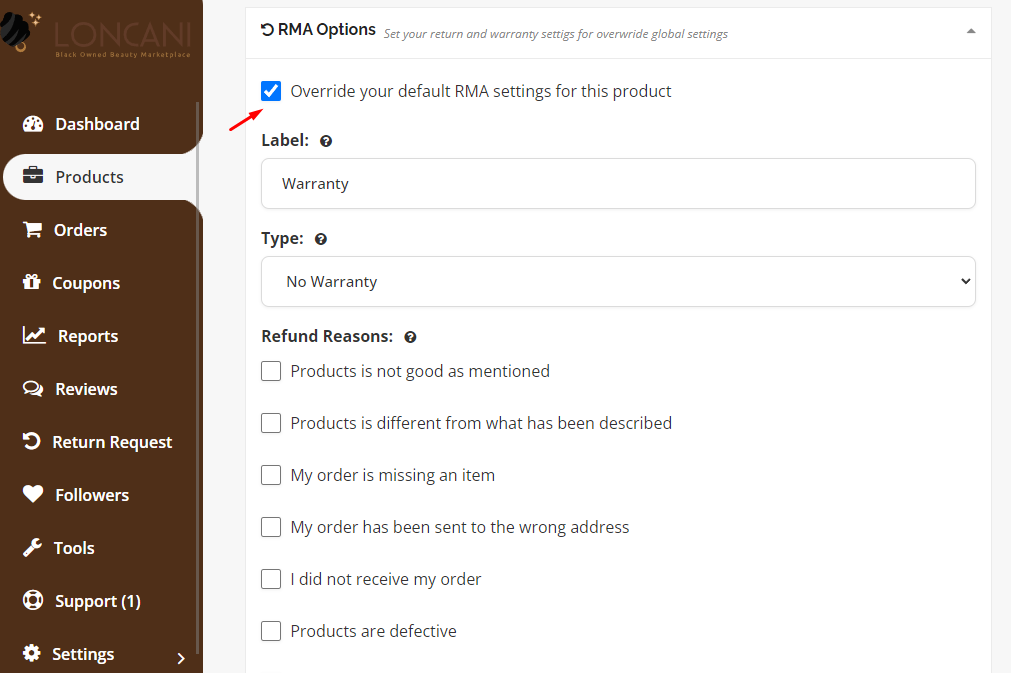Return and Warranty Request Setting
For All Products
As any vendor, you would require to login to your account and navigate through Vendor Dashboard → Settings.
Now, Select RMA.
Option 1: Label
This is the part where the vendor adds a label to the RMA facility for the customers for his all products. In this case, it is labeled as ‘Warranty'. The vendors can add any label of their choice.
Option 2:
There are certain dependencies on this option of warranty type. The dependencies are demonstrated below.
Type:- No Warranty & Warranty Included
The vendor can choose the type of warranty for the customers from here. Basically, there are three types of warranty to offer for the vendors to their customers. No Warranty, Warranty included and Warranty as Add-On.
The type ‘No Warranty‘ will reveal no new option but selecting ‘Warranty Included' will add three more options, Length, Length Value and Length Duration as seen below.
Length option is whether you are looking to offer the warranty for a Limited time or lifetime. Length Value is the value to be added for the warranty offered for any product. Lastly, Length Duration is the term of the warranty in the form of Month or Years.
When the length of the warranty is selected to “Lifetime”, the length value and length duration option will get hidden as shown below.
Type: Warranty as Add-On
When the vendor choose this option of warranty type. The vendor can allow the customers to choose additional warranty period for an added cost. The vendor can set that cost and duration from the Add-On warranty setting option as shown below.
Option 3: Refund Reasons
This option displays all refund reasons set by the admin. Now the vendors can choose to display the refund reason of their choice by tick checking the box that goes with their store and products.
Option 4: RMA Policy
This is the return and warranty request policy set by the admin. The vendors can set the policy of their own for the customers based on their store, products and services.
For Individual Product (Vendor settings)
Apart from setting the RMA for all products, the vendor can also set up RMA settings for an individual product.
To do so, the vendor has to navigate to Vendor Dashboard > Products > Select a product > Edit > RMA Options (Check the “Override your default RMA settings for this product”)
After that, you will get the options for setting up the RMA for this product as shown below.
The fields in this setting are the same as the fields in the global setting but here it works for this product only.
Managing Customers' RMA Requests
To manage customers' RMA requests, the vendor has to go to his/her Vendor Dashboard > Return Request

Next, your vendor will get options to chat with the customer and to meet up the return request. Moreover, the vendor can change the status of the RMA request if he/she want to.
Here are the statuses:
- New: When the vendor gets any new RMA request from a customer.
- Processing: When the vendor sets the status to processing, the customer will be able to view the RMA requests' status as ‘Processing'.
- Completed: When the RMA request is completely processed then the vendor will select this option.
- Rejected: The vendor will select this option if he or she wishes to reject the RMA request.
- Reviewing: Vendor will select this option when the RMA request is under review.
